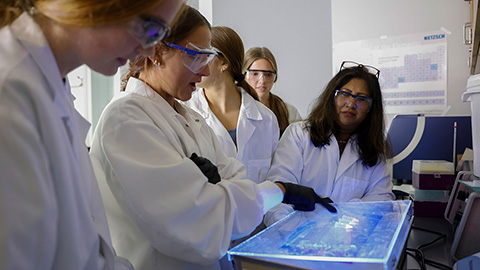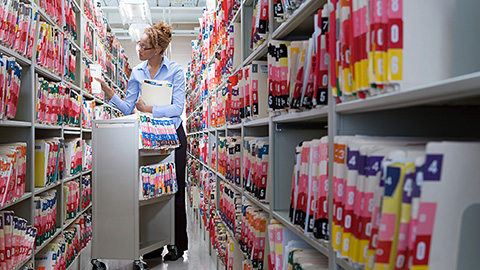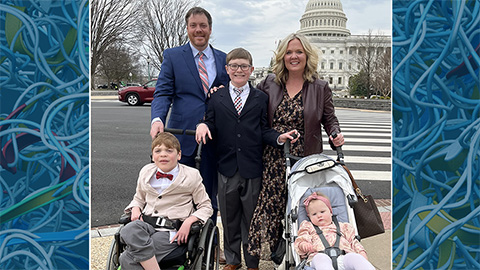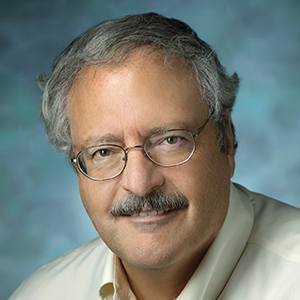We are still here for you
In August 2018, I wrote my first President’s Message, titled “The ASBMB is here for you.” I had just taken office and had recently moved my lab to the University of Georgia after about four decades at Johns Hopkins. I was looking forward to a new phase of my career and my service to the American Society for Biochemistry and Molecular Biology.
Today, I write to you from my home office. Science and teaching are still going on despite the pandemic. We are all on lots of Zoom calls. Even though Georgia is opening up prematurely, I am choosing to stay home for a while longer. Fortunately, I have a nice place to quarantine. We had a virtual laboratory research meeting today, and all of the students and fellows are doing well.
The COVID-19 pandemic has changed our world in ways we never could have expected. Universities and institutions are closed indefinitely. Many people have lost their jobs, been furloughed or had their pay reduced. Social distancing has drastically changed our work and social lives. Many of us know someone who has become ill, and some of us have lost friends and colleagues. At least one ASBMB member has died after contracting this coronavirus.
But at least one fact remains: The ASBMB is here for you. I know you’ve been bombarded by commercials conveying similar messages, but in the case of this society, it’s true! We exist for you, and we are doing everything within our power to support our members and help you through these uncertain days.
Like many of you, I had expected to be in San Diego last month for the ASBMB annual meeting. One of my goals as president was to tweak the structure of the meeting to give more young people opportunities to present their research. Meeting co-chairs Robert Haltiwanger and Carla Koehler worked very hard with their committee and ASBMB staff to make that a reality, and I am deeply saddened that we were forced to cancel the meeting.
However, I want to make sure you know that we will be bringing you much of what was planned for the meeting in an online format, including virtual poster presentations and spotlight talks. A virtual issue of the Journal of Biological Chemistry includes papers by scientists who were scheduled to speak at the meeting.
Many of the ASBMB committees have been hard at work with virtual meetings. They continue to work hard to keep the services provided by the ASBMB actively running. In particular, the Public Affairs Advisory Committee, chaired by Terri Goss Kinzy, with the lead ASBMB staff member, Benjamin Corb, has been active in voicing our concerns about the politicizing of science, including the National Institutes of Health. During these trying times, it is even more essential that policy decisions are based upon science, not on politics or unfounded beliefs that are not based upon data.
In the last two months, the ASBMB has produced webinars and podcasts, hosted Twitter chats and check-ins. ASBMB Today has shared stories of research related to COVID-19 and stories of how some members are organizing efforts to help fight the virus and of how others are surviving in this new world.
Are we doing enough? We need you to be the judge of that. If you have suggestions for other ways we can be supporting our members, we’d like to hear them. We sincerely hope to see all of you in person at our next annual meeting in Indianapolis, May 1-4, 2021. Hopefully, COVID-19 will be behind us by then!
Meanwhile, please stay safe and take care of yourselves.
Enjoy reading ASBMB Today?
Become a member to receive the print edition four times a year and the digital edition monthly.
Learn moreGet the latest from ASBMB Today
Enter your email address, and we’ll send you a weekly email with recent articles, interviews and more.
Latest in Opinions
Opinions highlights or most popular articles

Debugging my code and teaching with ChatGPT
AI tools like ChatGPT have changed the way an assistant professor teaches and does research. But, he asserts that real growth still comes from struggle, and educators must help students use AI wisely — as scaffolds, not shortcuts.

AI in the lab: The power of smarter questions
An assistant professor discusses AI's evolution from a buzzword to a trusted research partner. It helps streamline reviews, troubleshoot code, save time and spark ideas, but its success relies on combining AI with expertise and critical thinking.

How AlphaFold transformed my classroom into a research lab
A high school science teacher reflects on how AI-integrated technologies help her students ponder realistic research questions with hands-on learning.

Writing with AI turns chaos into clarity
Associate professor shares how generative AI, used as a creative whiteboard, helps scientists refine ideas, structure complexity and sharpen clarity — transforming the messy process of discovery into compelling science writing.

Teaching AI to listen
A computational medicine graduate student reflects on building natural language processing tools that extract meaning from messy clinical notes — transforming how we identify genetic risk while redefining what it means to listen in science.

What’s in a diagnosis?
When Jessica Foglio’s son Ben was first diagnosed with cerebral palsy, the label didn’t feel right. Whole exome sequencing revealed a rare disorder called Salla disease. Now Jessica is building community and driving research for answers.

